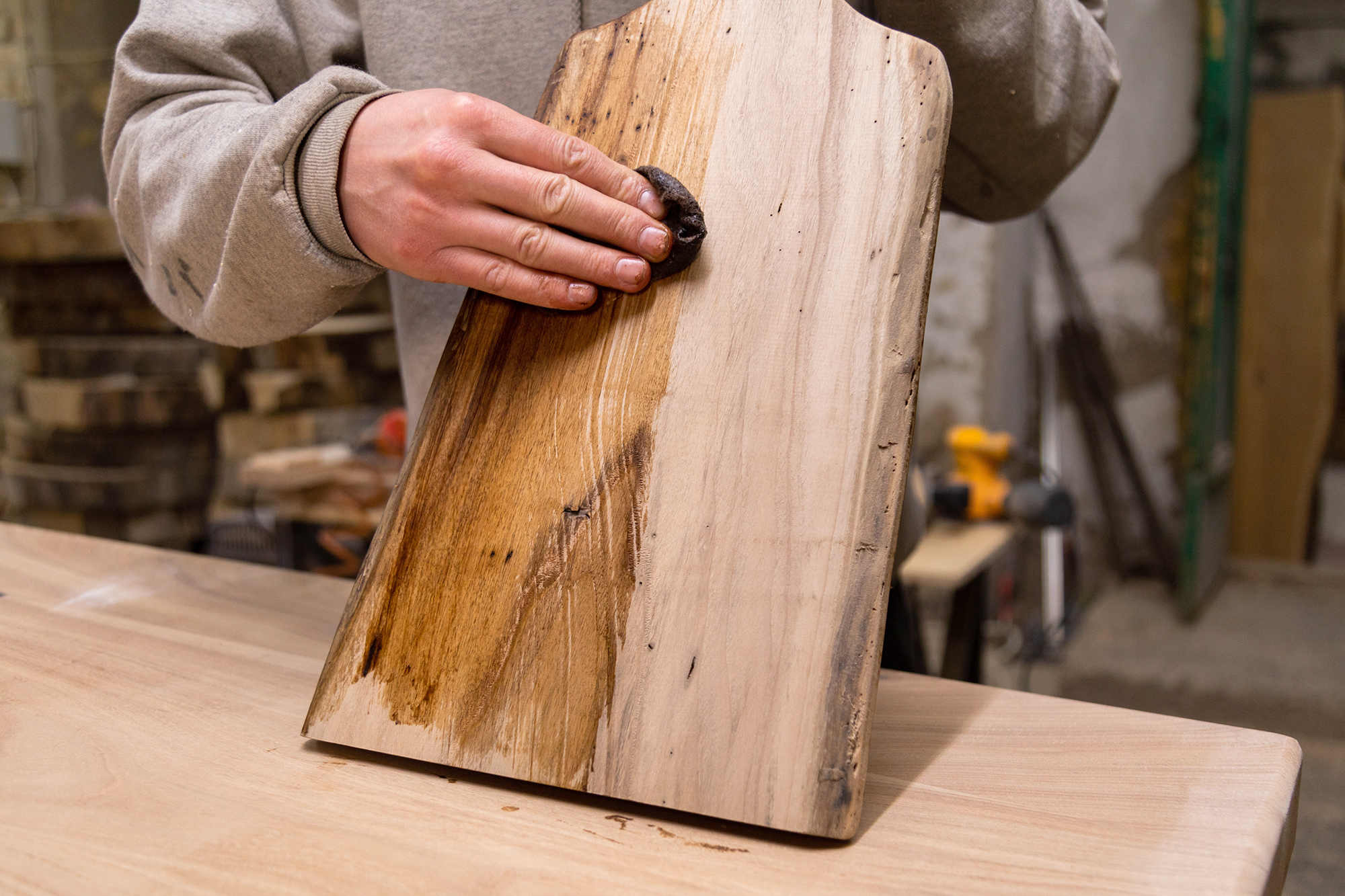
Why Finishing Matters
Wood is naturally porous, meaning it can absorb liquids, odors, and bacteria if left untreated. Finishing a board creates a protective barrier that repels water, prevents warping, and keeps your board looking fresh. Food-safe finishes are specially designed for surfaces that come into contact with food, ensuring they are non-toxic once cured.
Common Food-Safe Finishes for Cutting Boards
Let’s look at the three most popular options used by woodworkers and cutting board manufacturers today.
1. Mineral Oil: The Everyday Essential
Mineral oil is one of the most common and affordable finishes for cutting boards. It’s colorless, odorless, and safe for all types of wood.
Pros:
• Easy to apply and reapply regularly
• Doesn’t alter wood color or texture
• Readily available and inexpensive
Cons:
• Needs frequent reapplication (every few weeks)
• Provides surface protection only, not deep sealing
Best for: Routine maintenance of maple, cherry, or walnut cutting boards.
2. Beeswax: Natural and Nourishing
Beeswax is often blended with mineral oil to create a creamy “board butter.” It adds a soft sheen and slightly thicker layer of protection than oil alone.
Pros:
• 100% natural and non-toxic
• Enhances color and gives a gentle luster
• Provides a water-resistant barrier
Cons:
• Slightly more effort to apply
• Can leave residue if overapplied
Best for: Monthly conditioning and aesthetic enhancement — ideal for boards used for serving or display.
3. Tung Oil: Deep Protection and Shine
Tung oil is a plant-based drying oil that penetrates the wood and hardens as it cures, creating a durable and water-resistant surface. When labeled as “pure tung oil,” it’s entirely food-safe once cured.
Pros:
• Provides long-lasting, deep protection
• Highlights natural wood grain beautifully
• Excellent resistance to moisture and stains
Cons:
• Takes several days to cure
• Must ensure the oil is 100% pure (no additives or solvents)
Best for: Premium hardwood boards where durability and rich finish are top priorities.
How to Apply Finishes Properly
Step 1: Start with a clean, dry board.
Step 2: Apply a thin layer of oil or board cream with a soft cloth, following the grain.
Step 3: Let it soak in for several hours (or overnight).
Step 4: Wipe off any excess and buff gently with a clean towel.
Repeat every 2–4 weeks, depending on usage and washing frequency.
Choosing the Right Finish for You
| Finish Type | Durability | Appearance | Ease of Use |
|---|---|---|---|
| Mineral Oil | Moderate | Natural matte | Very easy |
| Beeswax Blend | High | Soft sheen | Easy |
| Tung Oil | Very high | Rich, glossy finish | Moderate difficulty |
For most home users, mineral oil or beeswax blends are ideal for quick maintenance. For premium hardwood boards, tung oil provides a more professional, long-lasting result — though it takes a bit more patience.
Final Thoughts
A well-finished cutting board not only looks beautiful but also stands the test of time. No matter which finish you choose, consistency is key — regular oiling or conditioning keeps your board safe, sanitary, and smooth.
Need help maintaining your cutting boards?
Explore our range of maple, cherry, and walnut boards, all designed for easy care and long-lasting performance.